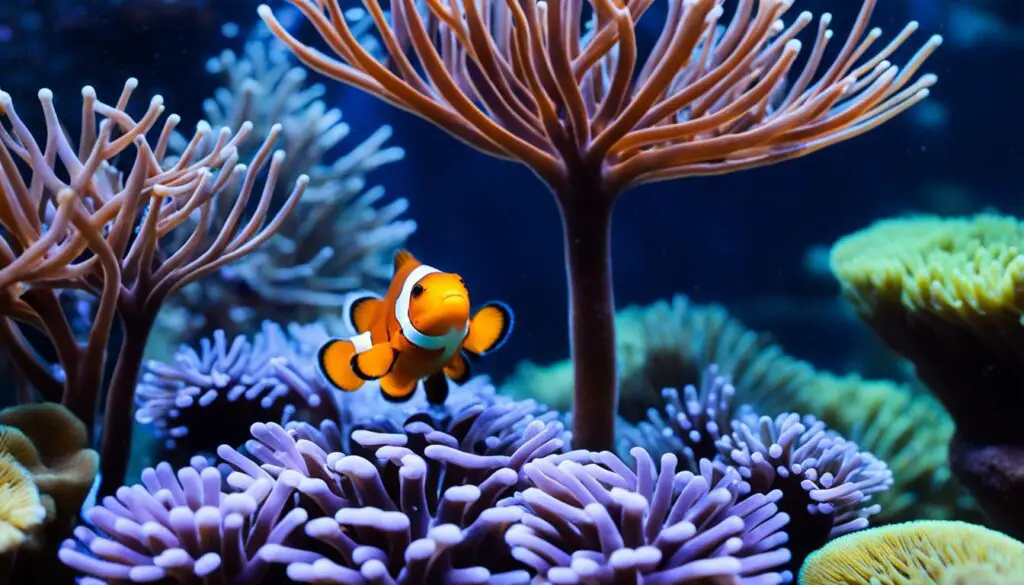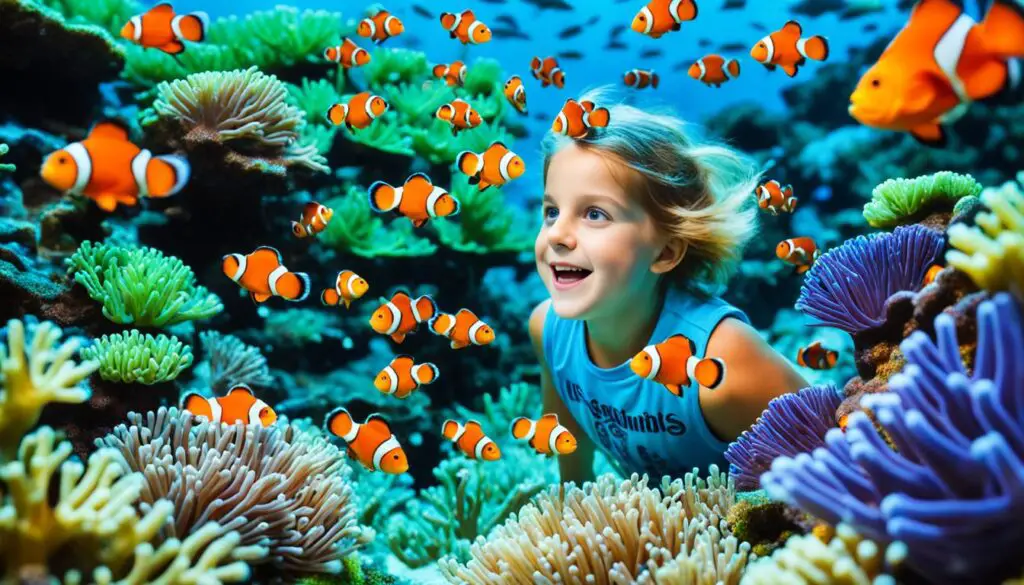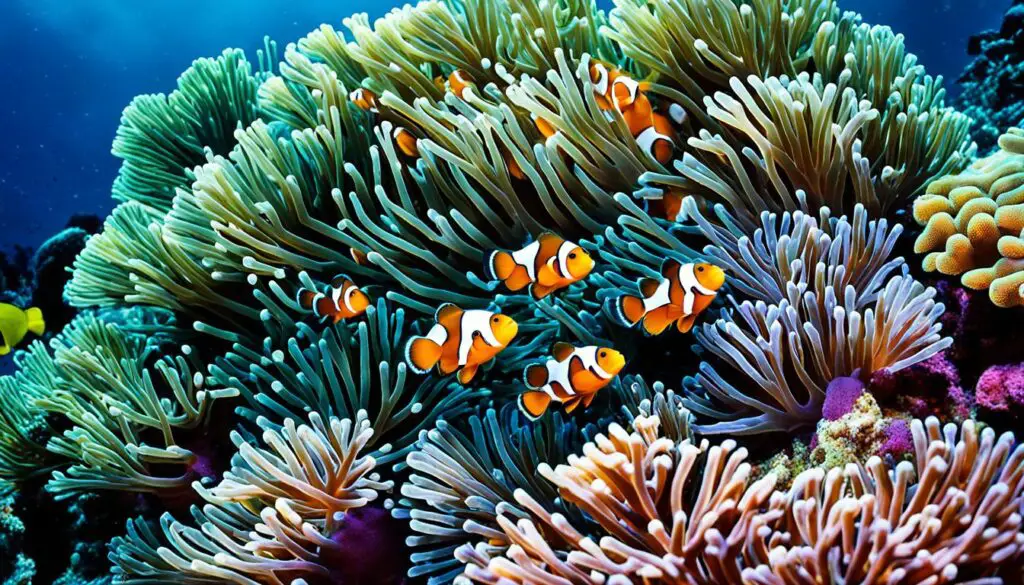Unveiling the Rainbow: Exploring Clownfish Colors
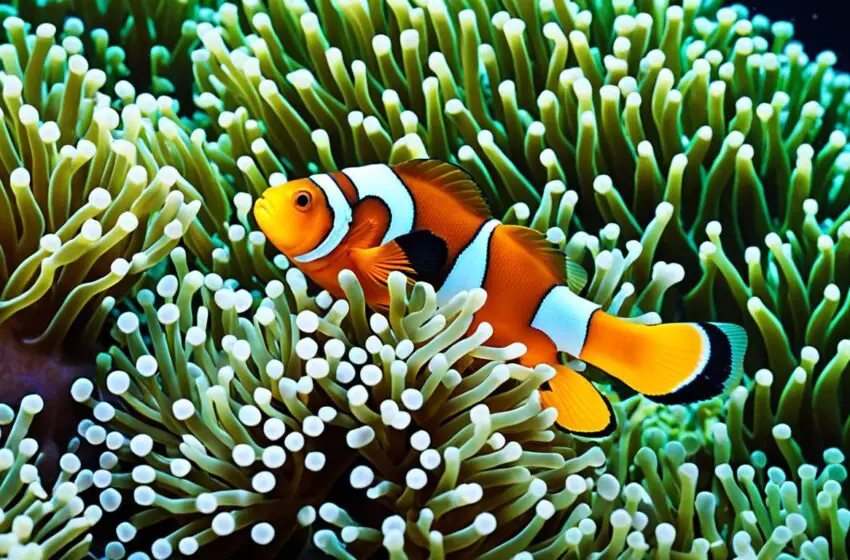
Clownfish are amazing creatures known for their bright colors and quirky ways. They show off a mix of oranges, yellows, pinks, and blues. These colors are not just to look pretty. They help clownfish talk and figure out their place in the group.
Clownfish also do something really cool. They team up with sea anemones. These fish have a special covering that keeps them safe from the anemones’ stings. In return for protection, clownfish help the sea anemones by giving them food.
What’s really interesting is how clownfish handle family matters. They can change from male to female if it helps make more baby clownfish. This skill makes them even more fascinating. After the movie “Finding Nemo,” everyone wanted to know more about these fish.
Key Takeaways:
- Clownfish mesmerize with their vibrant colors, showcasing a rainbow of oranges, yellows, pinks, and blues.
- Their colors serve as a mode of communication within their communities and play a vital role in establishing social hierarchies.
- Clownfish have a unique relationship with sea anemones, navigating their tentacles with ease thanks to a protective layer of mucus.
- They contribute to the well-being of the anemones by providing essential nutrients as part of their symbiotic partnership.
- Clownfish challenge conventional norms with their ability to switch between male and female roles, ensuring reproductive success.
Learning about clownfish teaches us about how life in nature interacts and relies on each other.
The Vibrant World of Clownfish Colors
Clownfish colors are stunning and crucial for their life. Each stripe and pigment communicates important messages. This helps in their social life and the ranking within their group.
These bright colors serve as a language in the clownfish world. They help members recognize each other and keep peace. The colors also show who’s in charge. Dominant males wear the brightest colors to lead and find a mate.
Clownfish use their colors for protection too. Their patterns mimic their living spaces, keeping them safe from predators. This trick helps them survive in the wild.
Clownfish also use their colors to run from danger. Their quick moves and vivid colors confuse predators. This lets them escape easily.
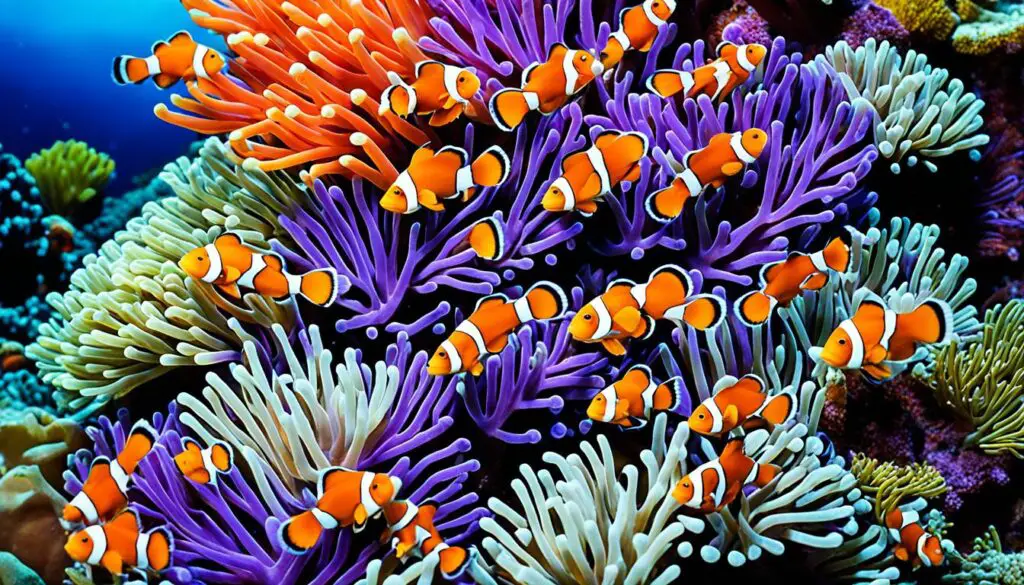
Understanding clownfish’s colors shows their smart ways in nature. Their vibrant look isn’t just pretty, it’s their survival skill. Let’s explore more about clownfish and their amazing world.
| Color Pattern | Meaning |
|---|---|
| Brilliant orange with three white stripes | Submissive subordinate male or juvenile |
| Black with an accent color (yellow, pink, or red) | Submissive female |
| Intense orange with white headband and dorsal stripe | Alpha male, dominant and territorial |
| Pale orange or brown | Non-reproductive adult |
The Intriguing World of Clownfish Relationships
Clownfish have a remarkable connection with sea anemones. Most fish fear their venomous tentacles, but clownfish glide through them safely. They do this by having a layer of mucus on their skin. This mucus protects them from the anemone’s sting.
But, the clownfish help the anemone too. They provide it with food, keeping it healthy. This shows a beautiful partnership where both sides benefit, aiding in their survival.
This unique bond is still a wonder to scientists. It leads them to study more about the sea and its complex ecosystems. By looking at the relationship between clownfish and sea anemones, we learn about the deep connections in nature.
FAQ
What are the different types of clownfish and their colors?
Clownfish stand out with their bright oranges, yellows, pinks, and blues. You’ll find the orange, tomato, and maroon types. Each has its special color mix.
How do clownfish use their colors to communicate?
Clownfish use their colors to talk and keep peace in their group. Their body stripes tell who they are and their pecking order. These colors also keep them safe from bigger fish.
What is the significance of clownfish colors in their survival strategies?
Clownfish colors are more than pretty – they’re life savers. The colors and patterns help them stay safe, know their place, and find food without danger.
How do clownfish interact with sea anemones?
Clownfish and sea anemones help each other out. Clownfish can live in anemones thanks to a slimy layer that blocks the sting. Anemones get food bits from the clownfish.
What is the significance of the protective mucus layer on clownfish?
The mucus layer keeps clownfish safe from anemone stings. This lets them swim around freely and stay safe in their anemone home.
How do clownfish contribute to the well-being of sea anemones?
Clownfish feed the anemones, which keeps them healthy. In return, the anemones shelter the clownfish, making both sides happy and safe.
Source Links
- https://www.shortform.com/podcast/episode/get-sleepy-sleep-meditation-and-stories-2024-02-21-episode-summary-snorkeling-in-the-great-barrier-reef
- https://vocal.media/petlife/clownfish-chronicles-unveiling-the-enchanting-secrets-of-ocean-s-rainbow-warriors
- https://www.card-bee.com/business-card-theme-clownfish/

